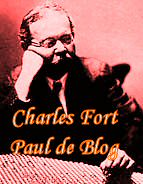Wednesday, March 09, 2005
Top 30 Problems With The Big Bang
Latest from Dr. Tom Van Flanden
|
Latest from Dr. Tom Van Flanden
- Static universe models fit observational data better than expanding universe models.
- The microwave “background” makes more sense as the limiting temperature of space heated by starlight than as the remnant of a fireball.
- Element abundance predictions using the Big Bang require too many adjustable parameters to make them work.
- The universe has too much large scale structure (interspersed “walls” and voids) to form in a time as short as 10-20 billion years.
- The average luminosity of quasars must decrease with time in just the right way so that their average apparent brightness is the same at all redshifts, which is exceedingly unlikely.
- The ages of globular clusters appear older than the universe.
- The local streaming motions of galaxies are too high for a finite universe that is supposed to be everywhere uniform.
- Invisible dark matter of an unknown but non-baryonic nature must be the dominant ingredient of the entire universe.
- The most distant galaxies in the Hubble Deep Field show insufficient evidence of evolution, with some of them having higher redshifts (z = 6-7) than the highest-redshift quasars.
- If the open universe we see today is extrapolated back near the beginning, the ratio of the actual density of matter in the universe to the critical density must differ from unity by just a part in 1059. Any larger deviation would result in a universe already collapsed on itself or already dissipated.
Its a big read and full of references... take a look.
Meta Research Bulletin 11, 6-13 (2002)
http://www.metaresearch.org/cosmology/BB-top-30.asp

|

